The most important plant species of the Botanical Garden
Bertoloni columbine (Aquilegia bertolonii Schott)
RANUNCULACEAE
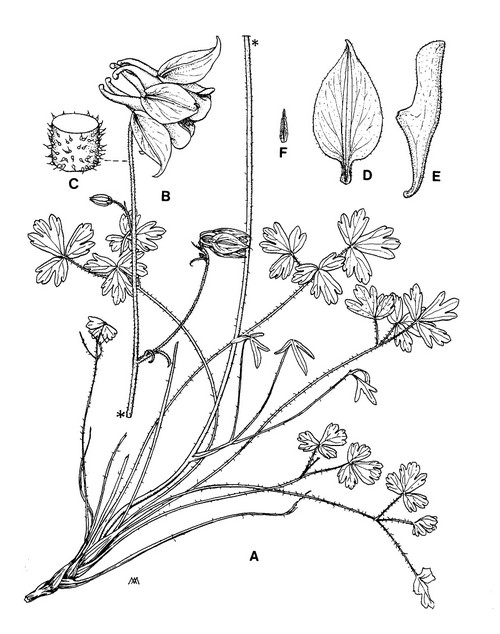
It is a plant 30 cm tall, with light blue-violet flowers; the corolla is composed of 5 external petals arranged in a star shaped like a hood, elongated in spurs. The leaves are composed of several elements, ovals or triangular, like small fans, positioned in groups of 3.
It lives on limestone cliffs, in prairies or clearings, between 800 and 1800 m.
The name Aquilegia is referred to the leaves that “receive and collect water” or because they are similar to the beak of an eagle.
Until now it has been defined Ligurian-Provençal endemic, but actually it is to be considered an endemic Apuan species.
Biscutella apuana Raffaelli (Biscutella apuana Raffaelli)
BRASSICACEAE
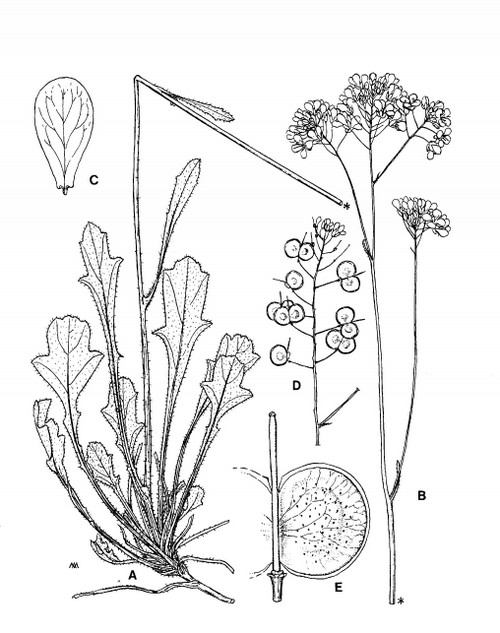
It is a perennial herb that is 30-40 cm tall with hairy-shaggy stem in the lower half. The trunk branches out at the top, with several yellow small flowers with 4 petals and long about 5 mm.
The name Biscutella is referred to the shape of the fruit, a small silique with two locules disk-shaped (“double shield”), welded along one side, from which raises the stylus. It lives in loose scrubs and rocky grasses, on limestone substratum, at altitudes between 200 and 1300 m. This plant species blooms from May to June.
It is an endemic species of the Apuan Alps.
The Canterbury bells (Campanula medium L.)
CAMPANULACEAE
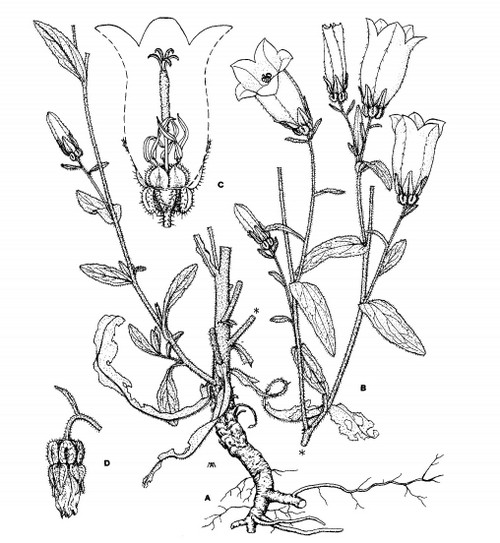
It is a plant with red-brown erect trunks, simple or branchy, with shaggy hairiness almost prickly, that can exceed 50 cm. The most characteristic and showy part of this plant are the big bell-shaped flowers, 4-5 cm long, of a beautiful blue-violet colour, but we can also see albino mutants, with white flowers. The florescence occurs in May-June; depending on the altitude, it can prolong to all the summer. It lives up to about 1500 m, on bushy slopes and on stone quarries. It is a pretty rare plant species, sub endemic, distributed from the southern France to the Tuscany, with rare habitats in Marche and in Aosta Valley.
Carex macrolepis (Carex macrolepis DC.)
CYPERACEAE
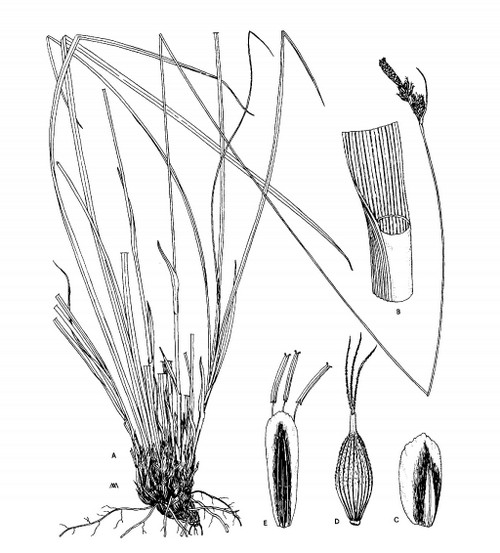
It is a plant with lignified rhizome, wrapped by brown-blackish fibres.
The leaves are alternated and long about half of the trunk, that is 30-60 cm tall.
The inflorescence is short; the ears are close, at the apex of the trunk; the male one is in apical position. The fruits are small greenish utricles. It lives in arid environments, on limestone substratum between 350 and 1800 m. it blooms between May and July.
It is a rare and sub endemic plant; in Italy it lives on the mountains of the Peninsula. It is found also on the mountains of the Peloponnese.
Carex macrostachys (Carex macrostachys Bertol.)
CYPERACEAE
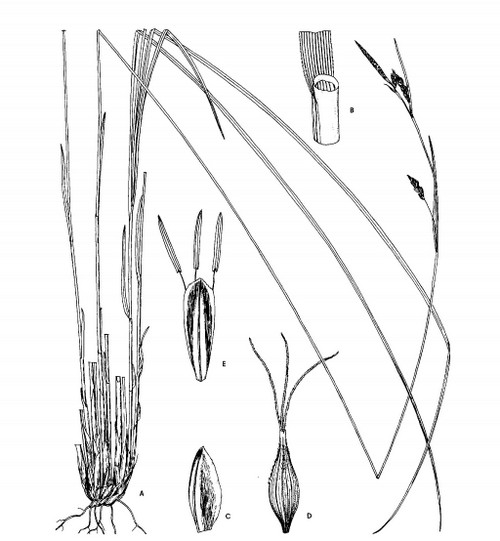
It is a plant densely bushy, with brown-reddish sheaths. The trunks are 70-90 cm tall. The leaves are thin, flat and long about half the trunk. The inflorescence is elongated and unilateral. The male ear is linear, is in apical position; the female ones (2-3) are brought by the capillary peduncles.
It prefers the grassy places between 550 and 1900 m. it is an Apuan endemic species.
Cerastium apuanum (Cerastium apuanum Parl.)
CARYOPHYLLACEAE
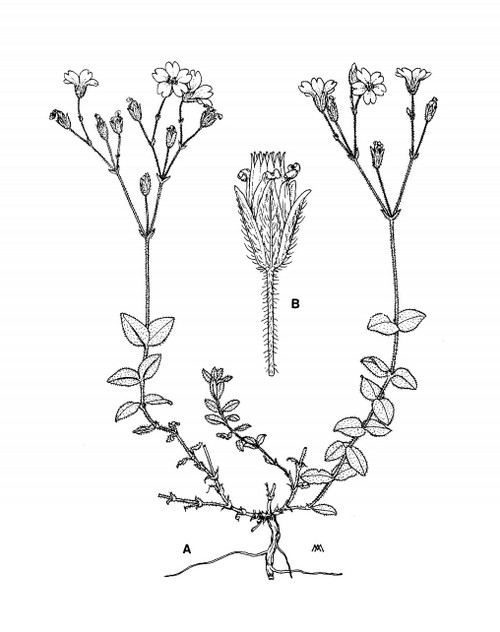
It is a cespitous plant tall about 20 cm, lignified only at the base. Each one of its numerous cylindrical stems has some white flowers, wide about 1 cm, with 5 bilobed petals. The leaves, ovals and opposite, are covered by short hair that make them soft to the touch. The florescence occurs from June to July depending on the altitude. It lives on rocks, between stones, and also in grassy and sunny environments.
It is an endemic species, it lives on the Apuan Alps and in some places of the Garfagnana.
Rhinanthus apuanus Soldano (Rhinanthus apuanus Soldano)
SCROPHULARIACEAE
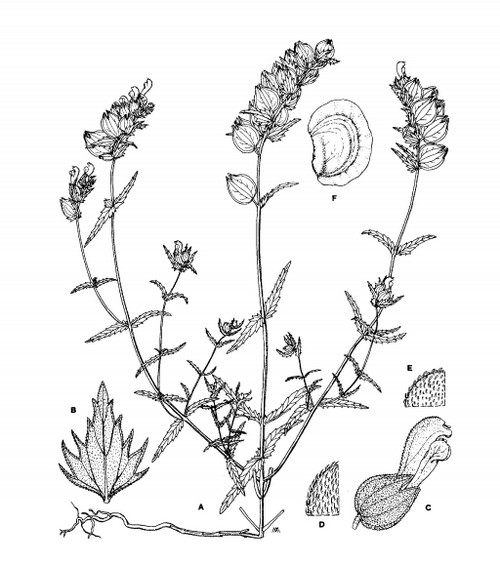
The name refers to the protuberance, similar to the nose, that characterises flowers of this type of hemiparasitic plants. It is a small herbaceous species, with prolonged inflorescence, dense, terminal to the branches, formed by yellow flowers in which the corolla is concolorous to the “nose”, differently from the other species of the Rhinanthus type, in which the “nose” is violet. It blooms from June to August, at altitudes between 300 and 1700 m. It grows on both limestone and siliceous soils.
It is an endemic species of the Apuane.
Carum appuanum Viv. (Carum appuanum Viv.)
APIACEAE
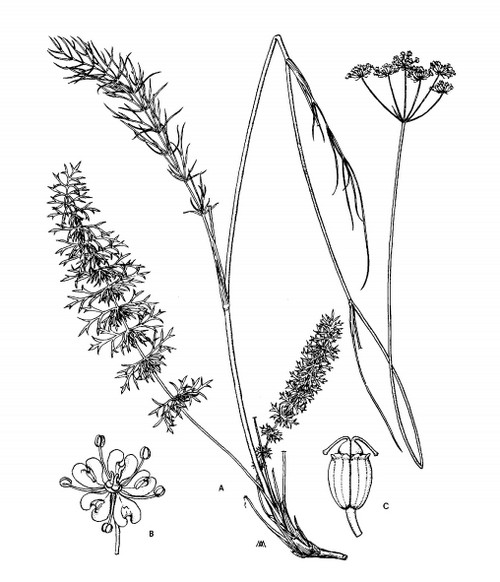
It is a plant with erect trunk, simple or a little thick. The leaves have three compound parts, divided into capillary laciniae. As all the species belonging to the Umbellifers, it has the flowers gathered in umbels; the petals are whitish. It is frequent in the cliffs, between the limestone debris and in the grasses between 800 and 1850 m. it blooms in June-August. It lives in different places of the Apuan Alps and on the Lucca Apennines.
The heath-leaved St. John's wort (Hypericum coris L.)
CLUSIACEAE
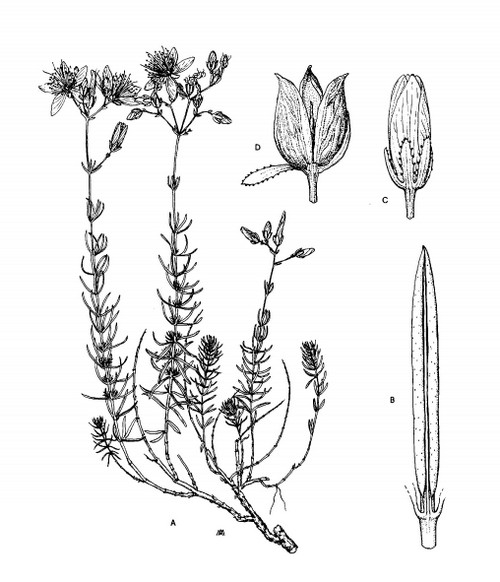
It forms a small and elegant bush, tall up to 40 cm, glaucous green coloured, with ascending stems. Each one has a corymbiform panicle of yellow flowers with very numerous stamens, with 5 petals and 5 sepals with small black glands on the edge. It blooms in July. It lives between the cliffs and arid places, on limestone substratum, from 0 to 2000 m. it is widespread on the alpine region, in Liguria and get down to the Tuscany. Its presence on the Apuans represents one of the most southern points of the distribution in Italy.
Moltkia suffruticosa (Moltkia suffruticosa (L.) Brand)
BORAGINACEAE
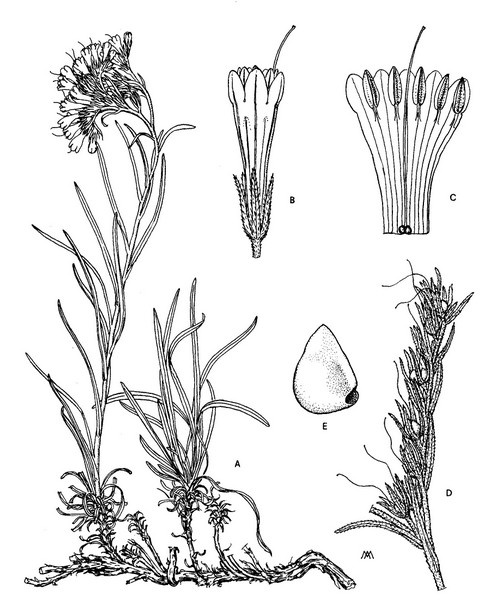
It is a plant generally tall less than 30 cm, with bushy appearance that tends to cover the rocks following their shape. The flowers are gathered in dense scorpioid florescences, that characterise al the plants of this family; they are light blue-blue coloured, with a tubular shape point downwards. It blooms between June and July and it is widespread on the limestone walls and in the sunny herbaceous places, between 300 and 1500 m of altitude. It is an endemic species, it is found on the Apuane, on the Lucca Apennines and in some places of the Venetian Pre-Alps; also reported on the Val d’Ossola, where has not been seen there.
Centaurea arrigoni (Centaurea arrigoni Greuter)
ASTERACEAE
The name Centaurea recalls the mythological centaur Chirone. It is a plant tall about 40 cm, ashy green coloured, with erect trunks, thin and branched. The numerous pinkish-purplish flower heads measure about 2,5 cm; the shell has a diameter of 7-15 mm. it blooms from June to August, in arid environments, on limestone substratum, between 1000 and 2500 m. it is an endemic species of the Apuan Alps and large part of the Tuscan-Emilian, Abruzzo and Lazio Apennine.
Centaurea arachnoidea (Centaurea arachnoidea Viv.)
ASTERACEAE
The name is referred to the centaur Chinone that according to the legend would have found safety nursing with one of those plants. The arachnoidea epithet would derive from the dense cobweb hairiness, sometimes disappearing, that is found on trunks, on the stalks and on the axis of the leaves. It reaches a height of 70 cm with erect trunks having one or a few yellow flower heads, wide up to 3 cm. the leaves are entirely divided in linear lacinae. It blooms in July. It lives in arid environments, on limestone substratum, up to 1500 m.
It is an endemic species that lives on the Apuane, on the Monte Ferrato (Prato), on Mount Cetona (Siena) and on the Lazio Apennine.
Globularia incanescens (Globularia incanescens Viv.)
GLOBULARIACEAE
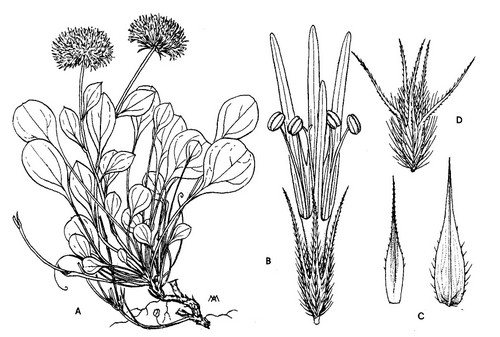
It is a small perennial plant that is 3-10 cm tall. The small flowers, with a light blue-violet corolla, are gathered in hemispherical terminal flower heads (from which the name Globularia).
It eliminates the limestone absorbed by the soil through the secretion of small limestone crystals that it can be seen with the lens on the basal leaves. It blooms from May to July, on altitudes between the sea level and 1900 m. It was selected as the symbol of the Botanical Garden and it has a notable scientific interest. This endemic species lives on the limestone cliffs of the Apuane and of the Tuscan-Emilian Apennine and in few other habitats, like the maritime cliffs close to the Gulf of La Spezia.
Orchis pauciflora (Orchis pauciflora Ten.)
ORCHIDACEAE
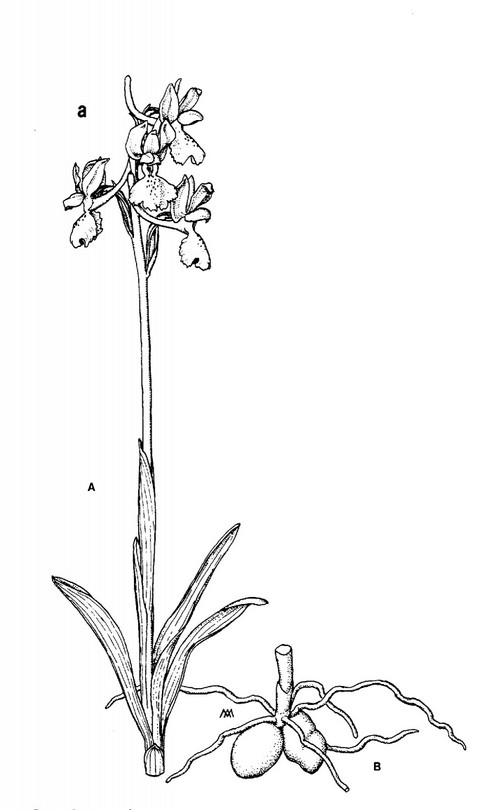
The name Orchis suggests the shape of the radical tubers similar to testicles. It is a plant with slender trunk that does not exceed 25-30 cm. The flowers are of a pale light yellow, while the labellum has a more intense yellow colour (yellow-sulphurous), punctuated of black. The labellum is prolonged at the back in a spur that is longer than the ovary and curved upwards. It blooms in April-May. It lives in arid grasses, of limestone substratum, up to 1500 m of altitude.
Its presence on the Apuane represents the northern limit of its distribution.
Santolina leucantha (Santolina leucantha Bertol.)
ASTERACEAE
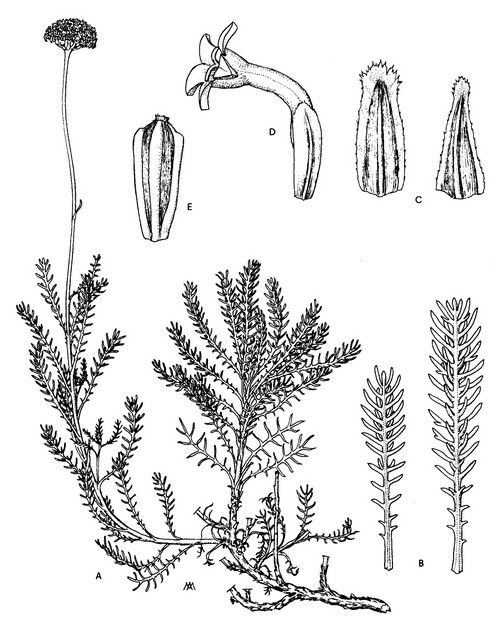
It is a cespitous perennial plant; each year it produces new floriferous trunks, having white flower heads of nearly spherical shape (of about 1 cm of diameter) at the apex. The leaves are narrow and linear, divided into thin pinnate lacinae.
In some towns of the Apuane it is still alive the tradition of collecting and drying the flower heads to make an infusion of good taste, similar to the chamomile tea, of calming and pain relieving properties. The abundant florescence occurs between June and July. It lives on the cliffs, mostly limestone, and in herbaceous sunny places between 500 and 1500 m of altitude. It is an endemic species of the Apuan Alps.
Polygala carueliana (Polygala carueliana (Benn.) Burnat)
POLYGALACEA
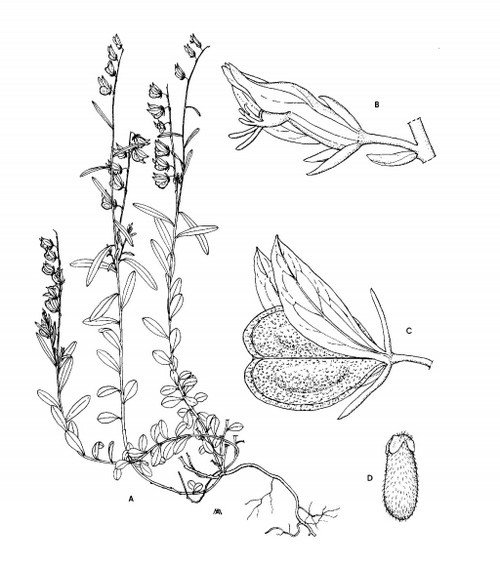
The Polygala type is characterised by flowers with an exceptional shape: the calyx is clearly visible, formed by 5 elements, two of which called “wings”, much more developed than the others, and with a petaloid aspect. The corolla is less showy, tuber form, open at the apex in laciniated petals. It is a plant of small dimensions (5-15 cm), it has slender and ascending trunks, with leaves that are basal elliptical and cauline elongated. The flowers are of greenish colour and the corolla is slightly protruding from the wings. The florescence occurs in May and August. It lives on the limestone sunny cliffs between 250 and 1500 m of altitude. This is an endemic species of the Apuan Alps.
The buckthowns (Rhamnus glaucophylla Sommier)
RHAMNACEAE
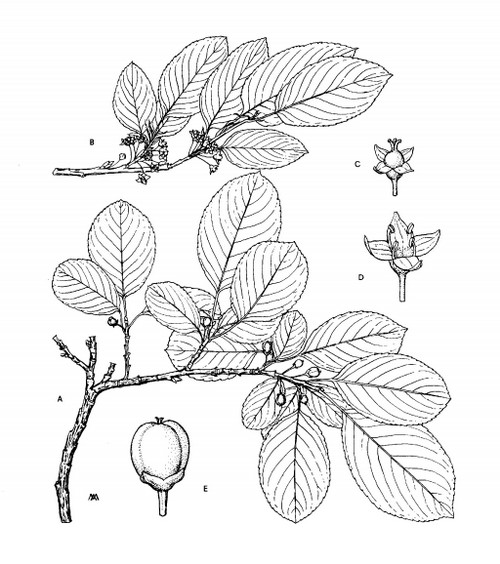
It is a shrub with creeping posture on the rocks, tortuous, with branches hanging from the cliff sometimes. The plant is dioecious, that is represented by male species that are different from the female ones. The leaves are at first tender green, then glaucous (from which the epithet glaucophylla) and then darker. The flowers are small, greenish, with 4 lobes; the fruit is composed of a small drupe, black when ripe.
The florescence occurs in May – June. It lives on limestone walls between 800 and 1500 m of altitude. It is an endemic species, it is found only on the Apuan Alps, on the Pania of Corfino and in a few habitats of the Lucca Apennine.
The rampion (Phyteuma scorzonerifolium Vill.)
CAMPANULACEAE
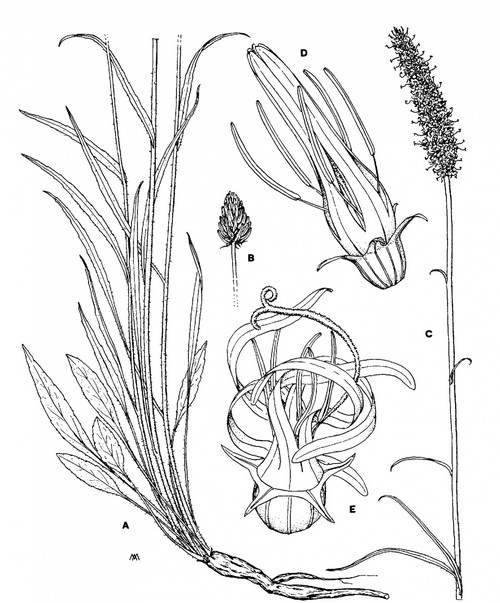
It is an herbaceous plant, 70-90 cm tall. The flowers, light violet coloured, don’t have a typically campanulate corolla, but is divided into 5 lacinae, attached to its base and at the apex, and so it is cracked on the sides.
It blooms between June and July. It is widespread in grazing, on grassy slopes from 400 to 2100 m. it is a sub endemic species that is found on the western Alps, in Liguria, on the Apuane and on the northern Apennine.
Salix crataegifolia (Salix crataegifolia Bertol.)
SALICACEAE
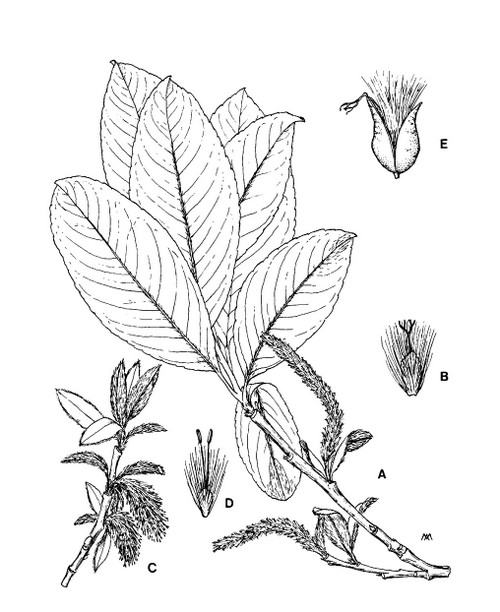
It is a shrub tall about 1 meter. The young branches are covered by long and reddish-brown hair that fall early. The ovate-elongated leaves are green and a little lucid above and glaucous in the lower part. The plant is with distinct sexes. The male inflorescences are cylindrical ovate, hanging; the female ones, longer and narrower, are at first hanging and then they can assume the erect position. It lives on cliffs and on limestone walls between 800 and 1700 m of altitude. This plant species represents a proof of geological remote times, characterised by climatic conditions milder than the current ones. It is an endemic species of the Apuan Alps.
Saxifraga lingulata Bellardi (Saxifraga lingulata Bellardi subsp. lingulata)
SAXIFRAGACEAE
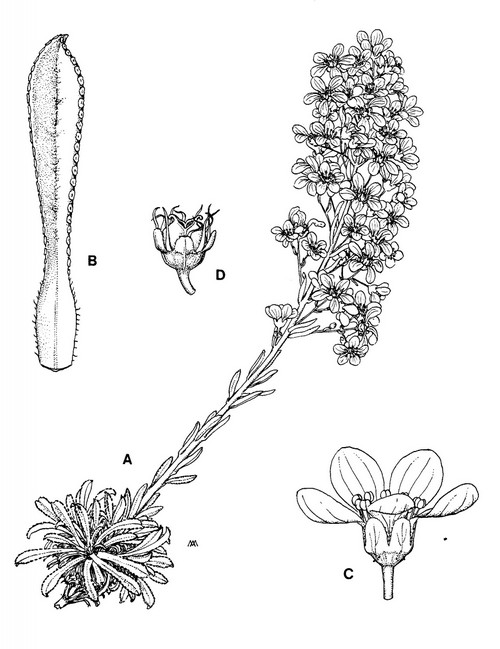
This plant has got rosettes of basal leaves that are narrow, elongated and coriaceous, that show evident white spots: they are limestone secretions, absorbed in excess by the plant, that is remitted outside. In the summer period the floriferous trunk is developed, 30-40 cm long, that has a panicle with many white flowers with 5 petals, characterised by minute purplish punctuations.
It blooms between June and July. It lives on rocky walls between 400 m and the peaks.
It is an endemic species, it lives on the Apuan Alps, on the near Tuscan-Emilian Apennine and on the Maritime Alps.
Sesleria tenuifolia Schrader (Sesleria tenuifolia Schrader)
POACEAE
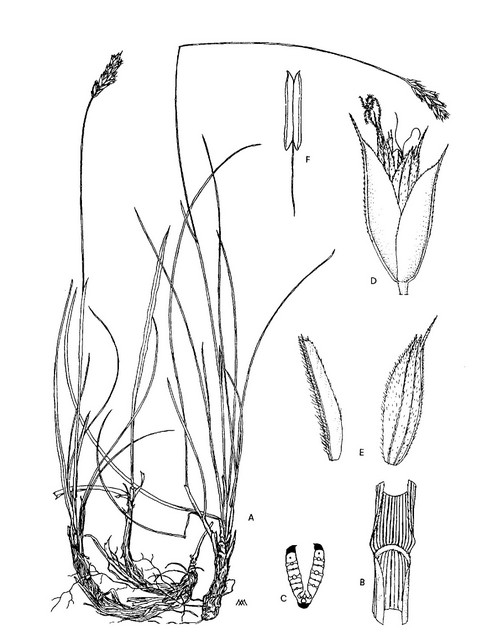
It is an herbaceous plant that forms dense and tenacious bushes wrapped at the base by sheaths dissolved in brown reticulate fibres. The stems are capillary, tall up to 40 cm. the flowers, little showy, are gathered in spike-like inflorescences. It blooms between March and July.
It is frequent in the arid turfs, on the altitude greezing, on limestone soils of the mountain slopes and peaks between 600 and 1800 m. it is an Illyrian-Apennine plant species, that is found on the Apuan Alps, on the Pistoia Apennine and on the central and southern Apennine, with isolated habitats on the Trieste Karst.
The valerians (Valeriana saxatilis L.)
VALERIANACEAE
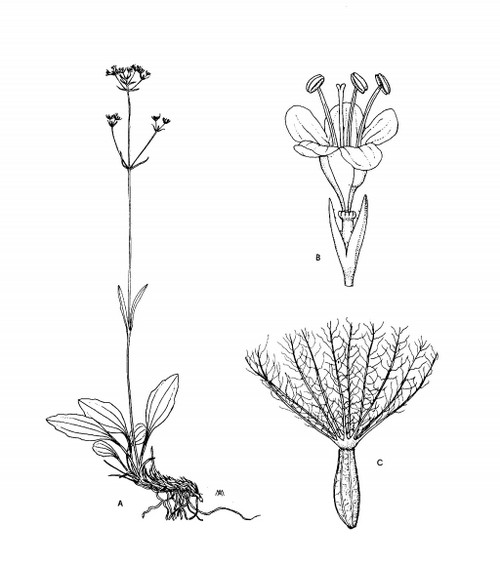
The name derives from the Latin valere, for the medicinal properties of some species of the Valerians type. It is a small herbaceous plant, of about 20 cm; the erect clusters have corymbs of small white flowers at the apex, of about 3 mm. The basal leaves are elliptical-elongated, entire and lucid; 3 nerves can be distinguished. It blooms in July. It lives on stony places and on limestone cliffs between 1000 m and the highest peaks. It is an alpine sub endemic species, that is found only on the eastern Alps and on the Apuane, where it is considered rare.
Lomelosia graminifolia (Lomelosia graminifolia (L.) Greuter et Burdet)
DIPSACACEAE
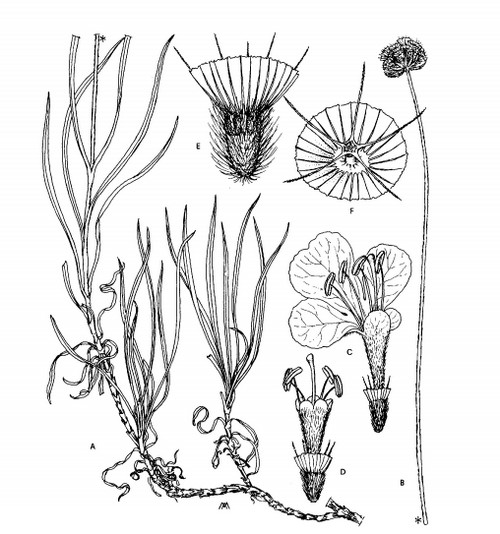
It is a plant with a posture of low herbaceous bushes, creeping, silky Argentine. The flowers are gathered in flower heads, in which the peripheral elements, more developed, that give to the inflorescence a rayed aspect. Each scape has only one hemispherical flower head, of about 4 cm of diameter, of a beautiful light blue-violet colour.
It blooms between June and August. It lives in stony places and on the cliffs, mostly limestone, it is widespread on the Alpine region, on the pre-Alps, and in some places of the Apennine.
Scabiosa holosericea (Scabiosa holosericea Bertol.)
DIPSACACEAE
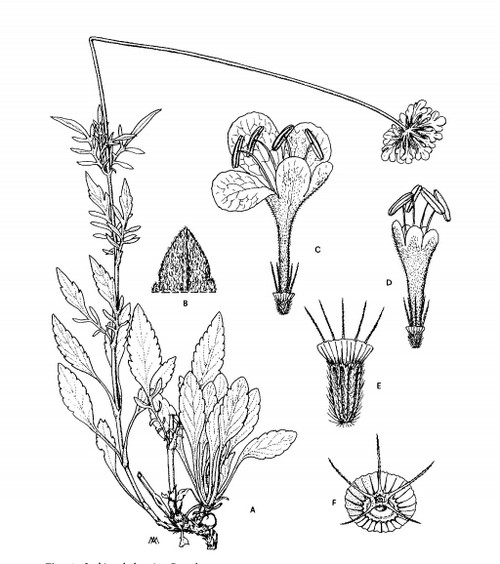
The term Scabiosa refers to the purifying properties of some species of this type that were used for the care of scabies. The epithet holosericea recalls the soft and silky aspect to the touch of the leaves. It is a plant 20-80 cm tall. The leaves have a characteristic grey-green colour. The flower heads, of about 3 cm of diameter, have a beautiful rosy-lilac colour; the external floral elements, more developed, give a rayed aspect to the inflorescence. It blooms in June-July. It lives on arid glasses and stone quarries, preferably limestone, between 500 and 1900 m. it is a plant species of eastern origin (Balkan peninsula, Greece); it is found on the Apuan Alps, on the Apennine until Calabria and in Sardinia.
The leafless stemmed speedwell (Veronica aphylla L. subsp. longistyla (Ball) Arcangeli)
SCROPHULARIACEAE
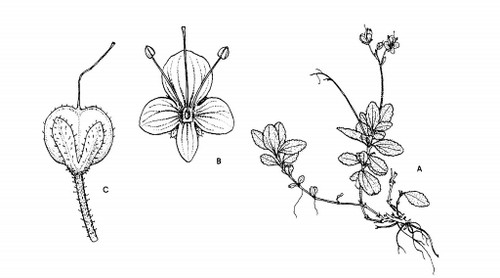
It is a small herbaceous plant, tall at most 8 cm, with dense rosettes of leaves inserted on epigean rhizomes slightly creeping.
The leaves are ovals and slightly serrated-crenulated. The small flowers have a corolla of a beautiful light blue colour or verging on lilac, gathered in short racemates, with elongated peduncle, of 2-6 close flowers. The stylus, in this subspecies, reaches the 7 mm of length. It is found on the limestone peaks exposed to the north, it has a limited range and some habitats on the Apuan Alps; in the near Tuscan-Emilian Apennine, where it was reported, it has not been found again.






